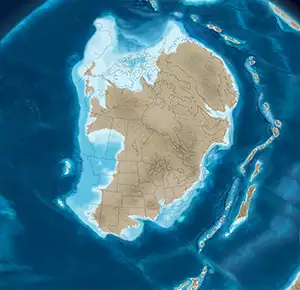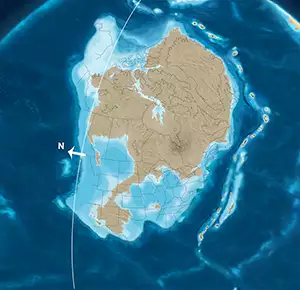The Cambrian Period
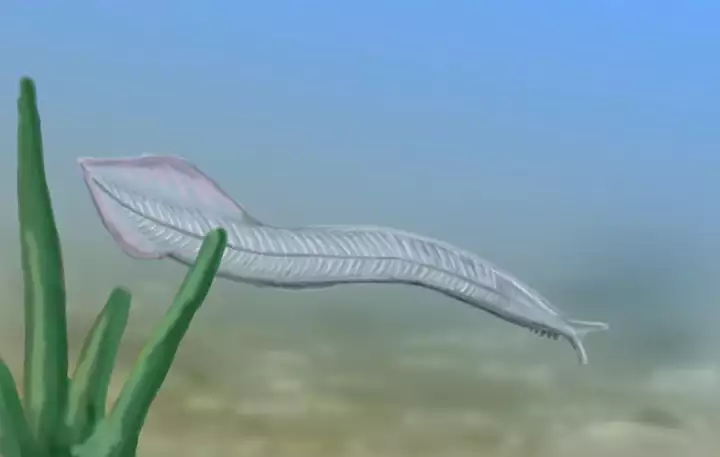
A pikaia from the Cambrian
The Cambrian Period lasted from about 541 million years ago to about 485.4 million years ago. The period is named for Cambria, the Latin term for Wales where Britain's Cambrian rocks are most exposed. The area of Cambria also has the honor of having been emplaced as a sedimentary deposit that has been preserved in extraordinary condition: even the soft tissue of some creatures still exists after 500 million years. There are similar concentrations of well-preserved Cambrian fossils at Blackberry Hill in central Wisconsin and in the House Range of western Utah. Keep in mind that the vast majority of Cambrian life existed only in the seas, indicating that areas of greater Cambrian fossil abundance had to be unique waterflows at the bottom of the ocean...
We also previously imagined the Cambrian to be the time of the trilobites but that evidence resulted from the fact the trilobites were well-armored and that armor has helped to preserve their fossils down through the ages. The reality is the seas were filled with arthropods, of which trilobites are only a small subset. And most creatures lived near the bottom of the shallow seas of the time. At most, land might have a microbial crust of fungi or lichens. Toward the end of the Cambrian, some mollusks evolved to carry themselves onto land and feed on the vegetation.
The lower boundary of the Cambrian is set at the time of appearance of multicellular organisms. To be more precise, the date is set to an atmospheric anomaly (a precipitous drop in C13 that also marks a mass extinction. Dating was accomplished using zircons found in a volcanic ash horizon and, based on the decay rate of uranium to lead, that date is 541 ± 0.3 million years ago.
Epochs of the Cambrian
- Furongian
- Series 3
- Series 2
- Terreneuvian
Previously, the boundary had been set at the date of appearance of certain trilobites, ancient sponges and certain reef-building organisms. However, that date varied widely depending on what part of the world the fossils were found in. The carbon-13 anomaly was a contemporaneous global event.
During the previous period, the Ediacaran, the world had been dominated by unicellular organisms floating in the shallow seas. The Cambrian saw an explosion of multicellular creatures in the oceans and the beginning of a microbial crust on land. The seas were relatively warm through the Cambrian and the world was mostly ice-free.
The beginning of the Cambrian was marked by an increase in burrowing behavior among creatures living in the sea beds. That burrowing behavior continues to this day but back then, it radically changed the nature of the sea floor. In that change, creatures that had previously depended on the microbial mats that covered the sea floor went extinct while other species evolved to occupy newly opened niches in the new ecology.
About 515 million years ago, there were more species going extinct than new ones appearing. Within 5 million years about 25% of all genera and 70% of all species were gone. 500 million years ago oxygen levels in the seas plunged while hydrogen sulfide levels spiked. The oceans went anoxic and another mass extinction happened. The last part of the Cambrian was comparatively barren, although there was enough life to mark several more mass extinctions before the extinction event that marked the beginning of the Ordovician Period.
Geologically, the Cambrian began during the breakup of the supercontinent Pannotia: Baltica, Siberia and Laurentia had separated from Gondwana and were slowly moving north while Gondwana hovered over the South Pole throughout the Cambrian. There was a period of relatively extreme rotation of the Gondwana land mass during the Cambrian.
The climate was generally cold in the early Cambrian because the land mass of Gondwana was generally cutting off polar ocean currents. Sea levels tended to be high but there were several small glaciation events through the period, marked by rising and falling sea levels. The continental shelves were in relatively shallow water and that fueled the massive expansion of oceanic life between glaciation events, but when sea levels dropped, species died.
During the Cambrian, North America saw complex transgressive patterns of sedimentation onto the Laurentia craton. Early patterns of convergence in the North Iapetus Ocean were marked by the Finnmarkian (now Norway) and Grampian (now Scotland) orogenies. Near the end of the Cambrian the west-facing Taconic arc and other microcontinents were approaching the eastern shores of Laurentia. A transcontinental arch formed late in the period, a ridge that ran from today's Ontario southwest to New Mexico that was mostly above water.
Silisiclastic sedimentation dominated the lower parts of most Cambrian sections. Significant reservoirs of crude oil and natural gas began to be emplaced during the Cambrian and that action continued for several hundred million years after.
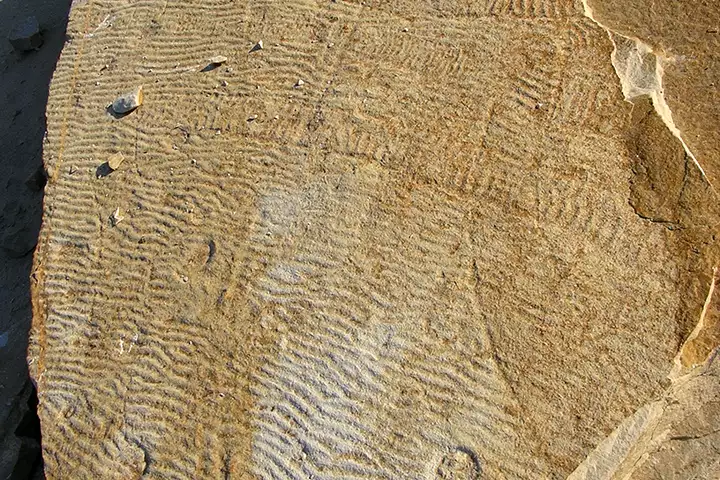
Fossils from Blackberry Hill, Cambrian era: stranded scyphozoans with Climactichnites trackways
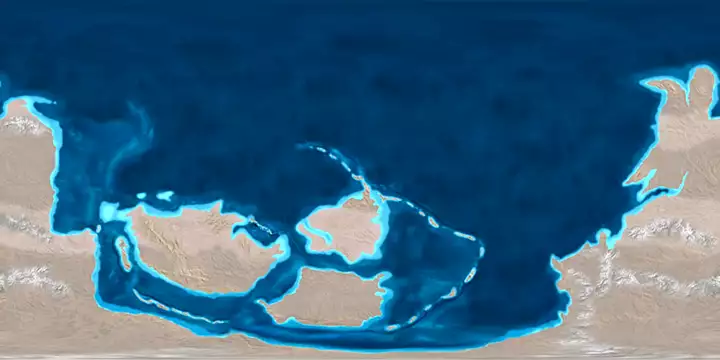
Earth, 540 million years ago
Upper maps © Ron Blakey, NAU Geology, Deep Time Maps
Lower image is in the public domain
Bottom map courtesy of Ron Blakey, CCA-by-SA 4.0 License
